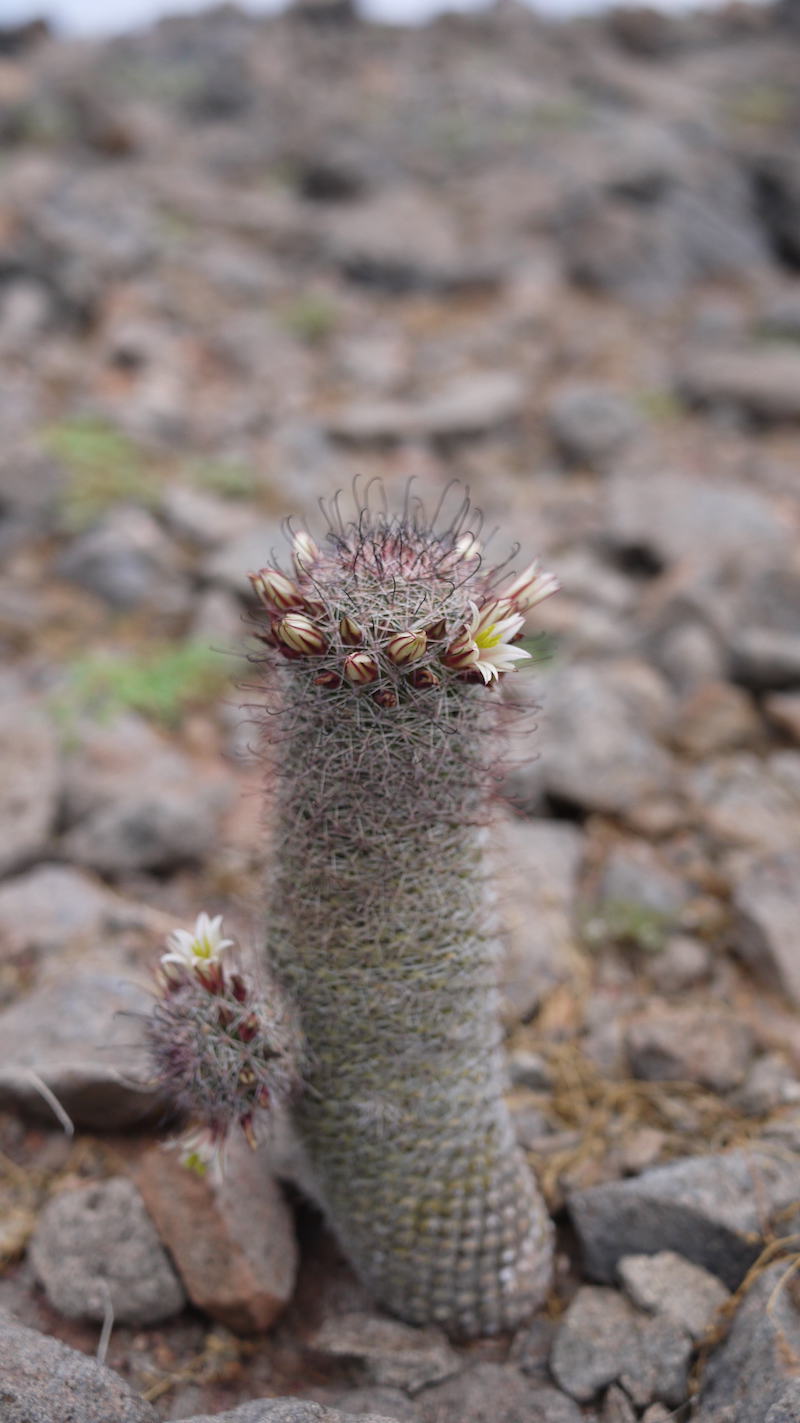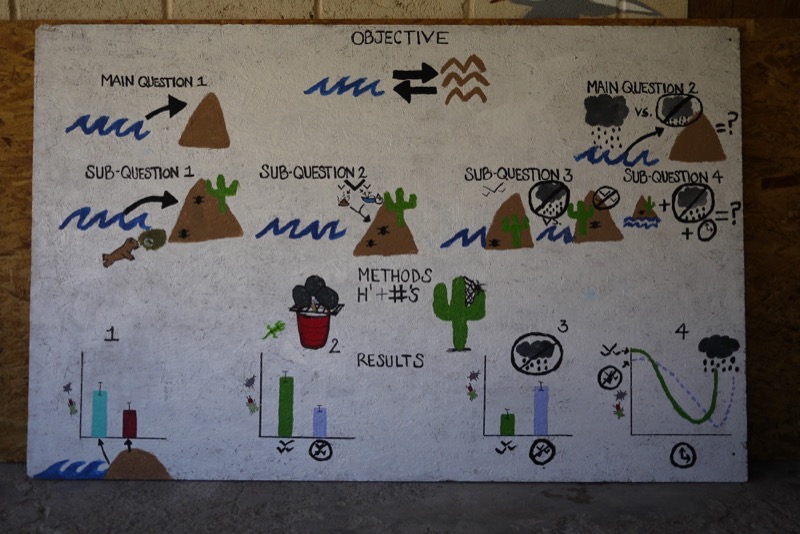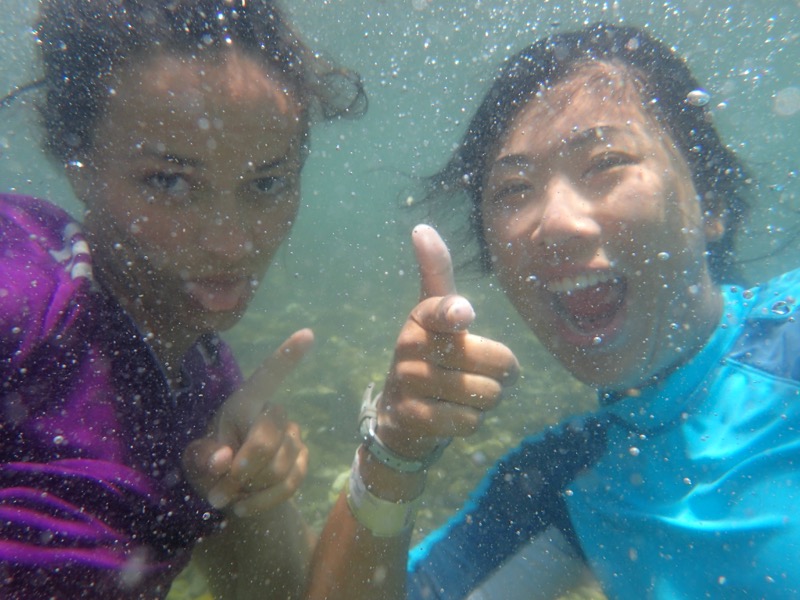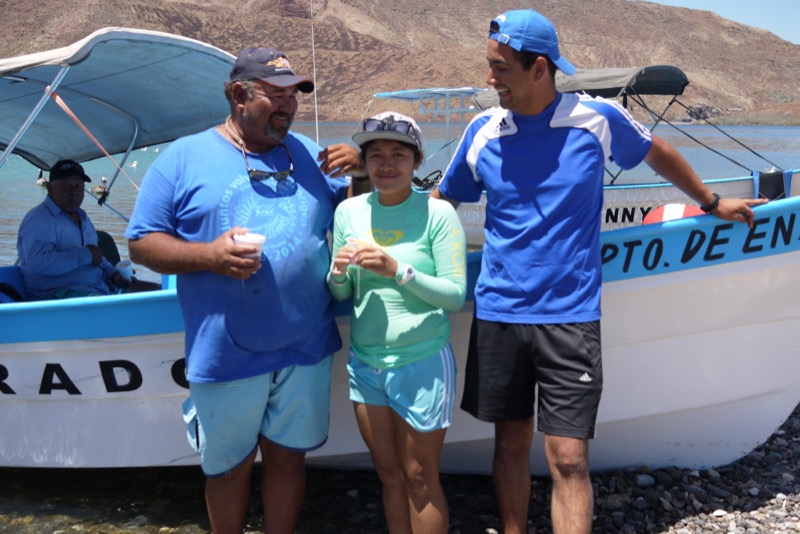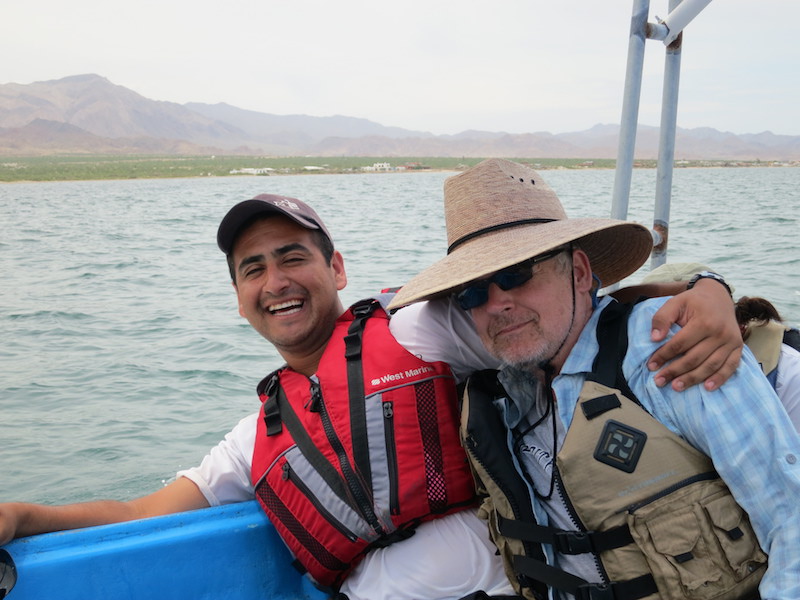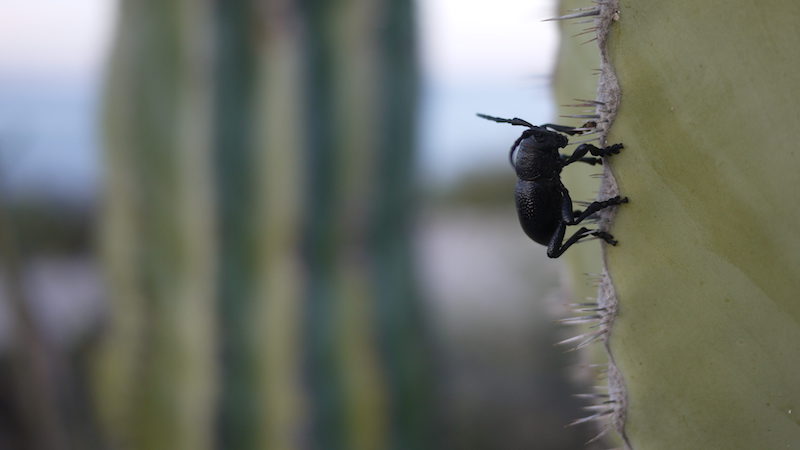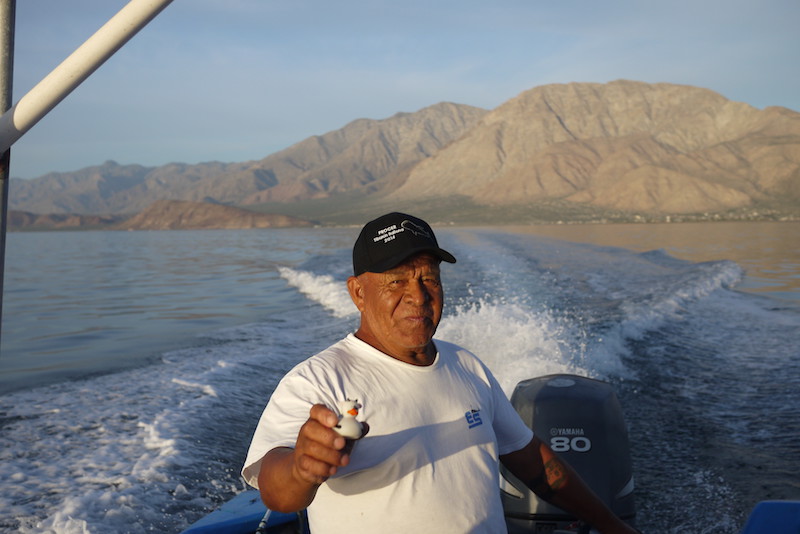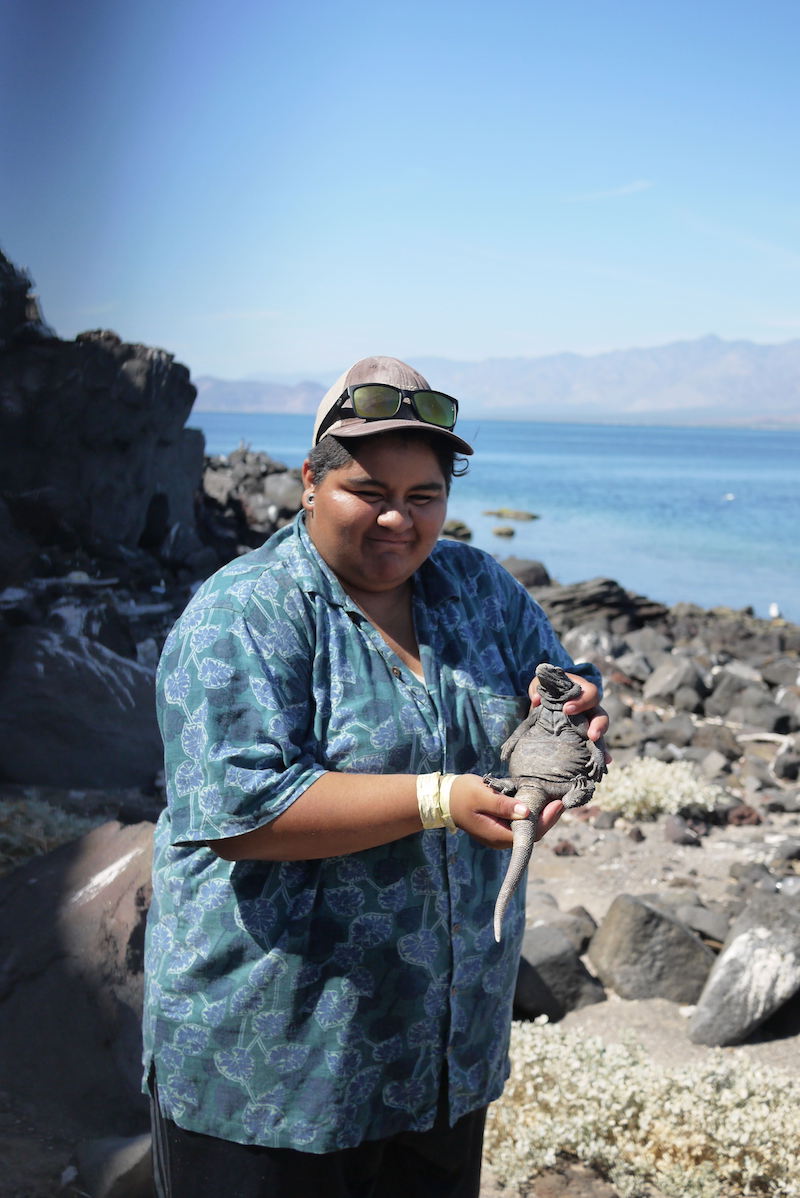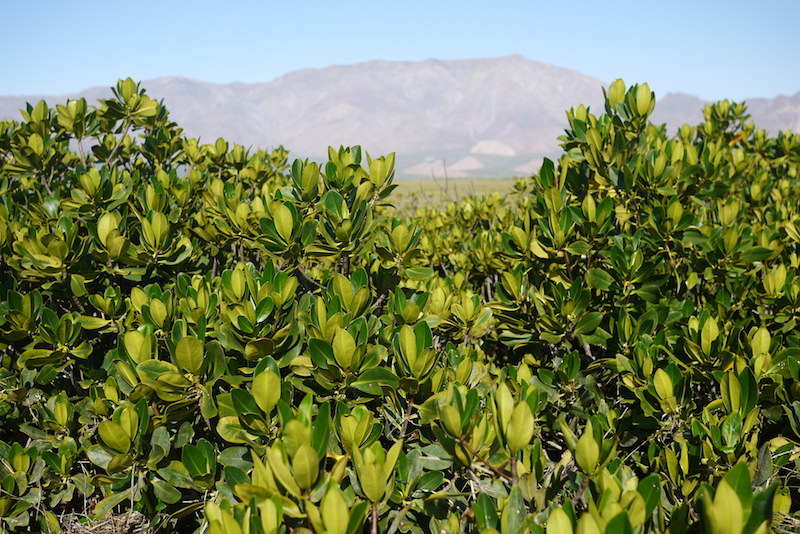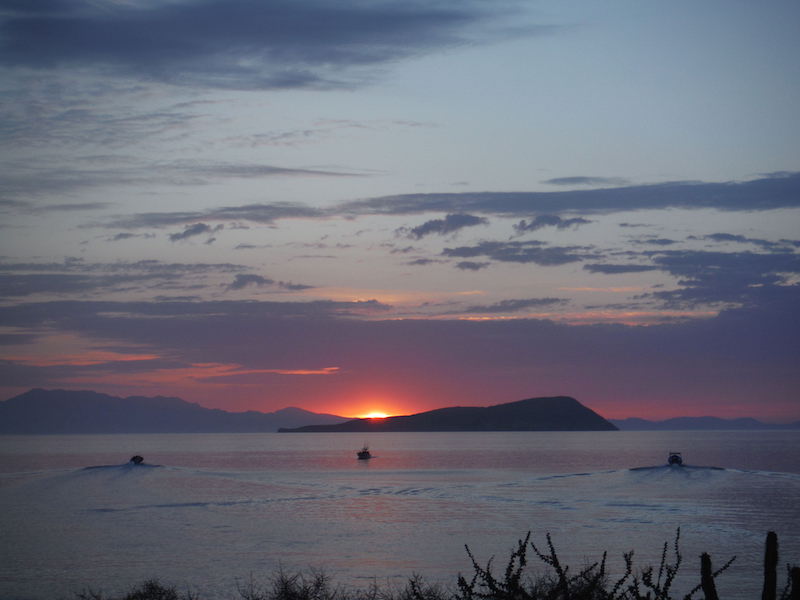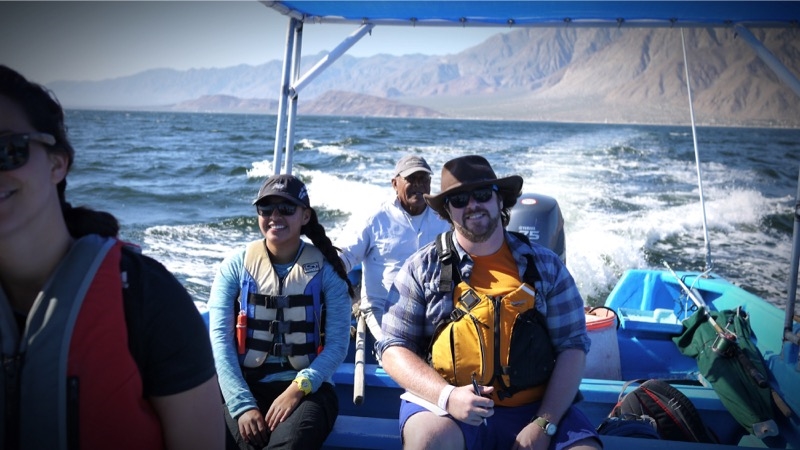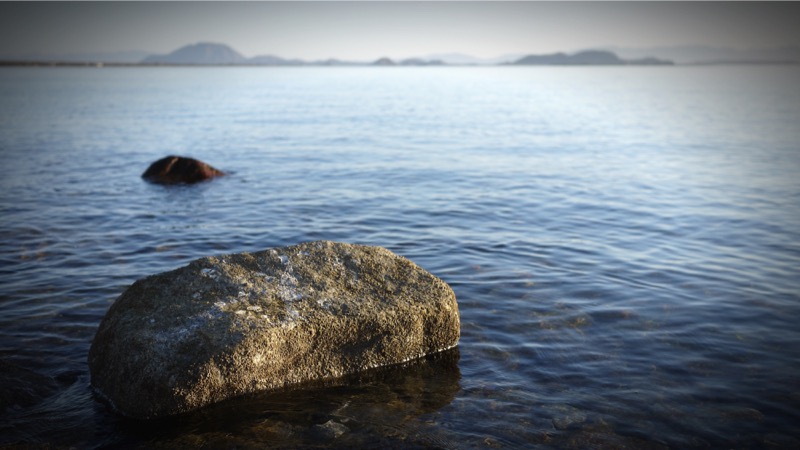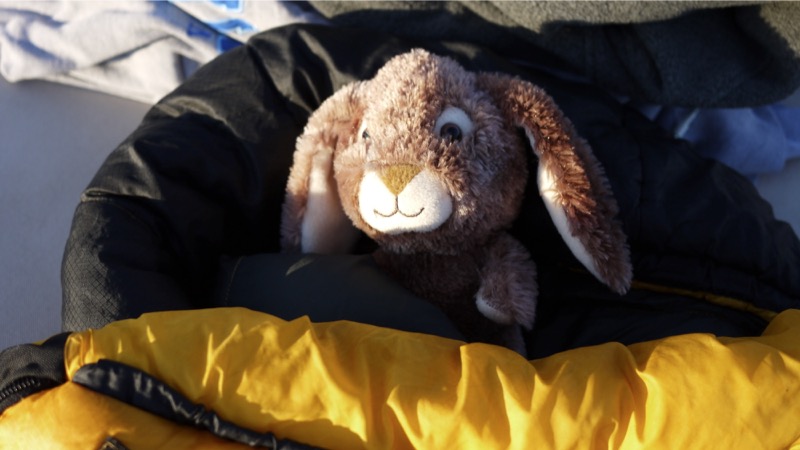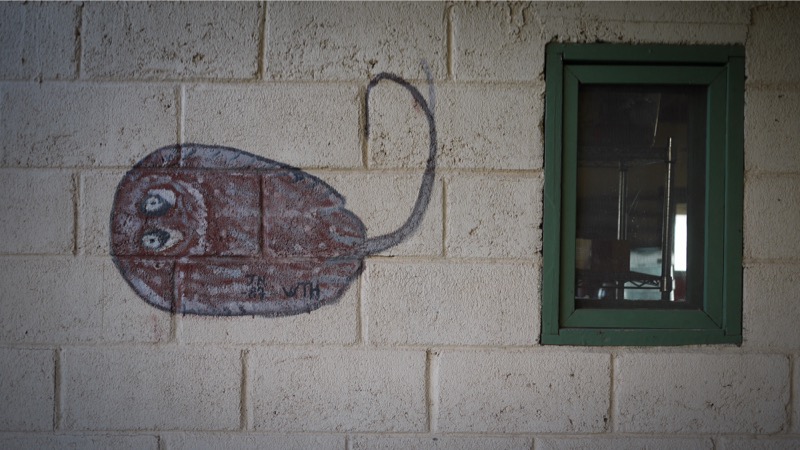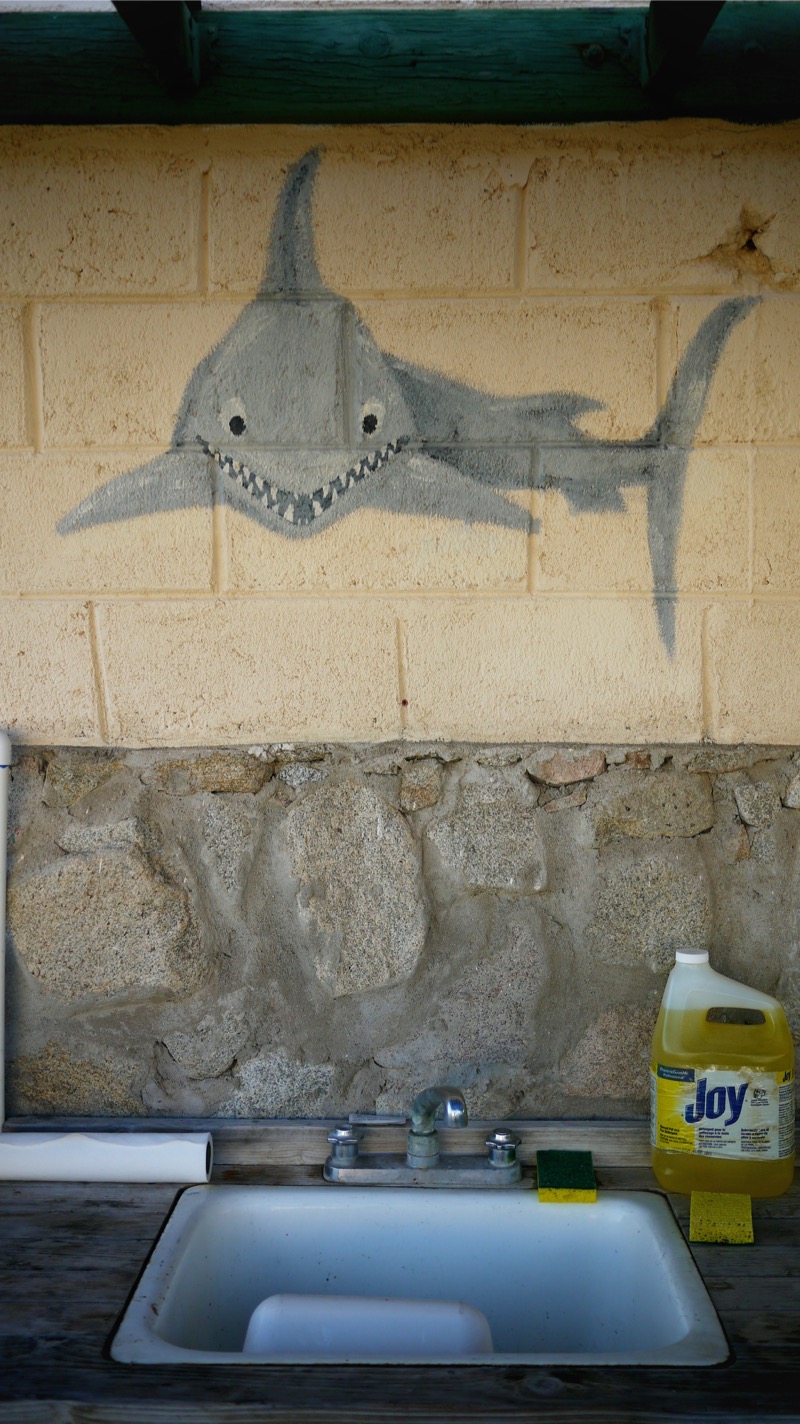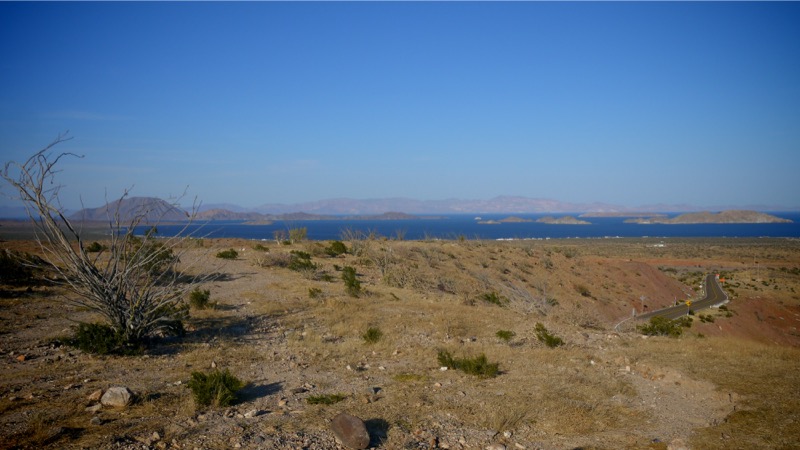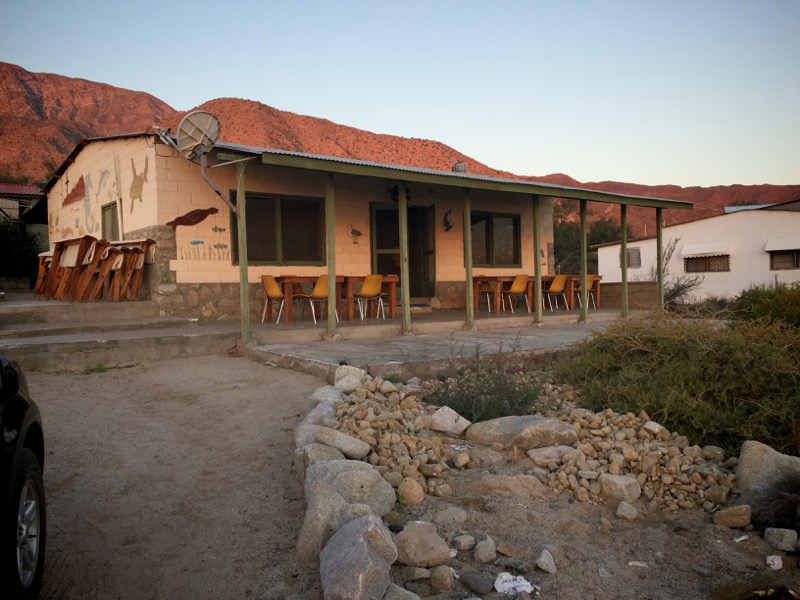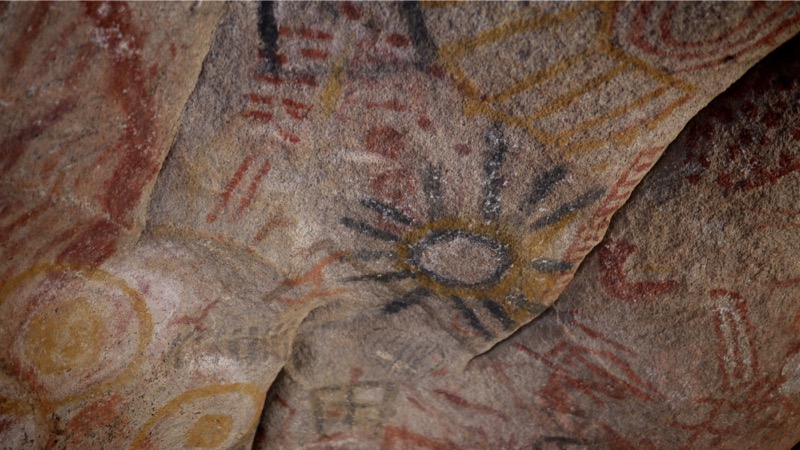well, not here, of course, but take a look at this one over at Phytophilia!
whats in my (field) bag - field knife
One of the essential tools I have in the field (although admittedly usually on my person, not in my bag) is a knife. This gets used pretty much every time I go in the field. I often find myself cutting line, bait, or kelp, prying samples off of rocks, removing cactus from my boots (or legs), and prepping lunch. Given where and how I work, this has led to a pretty rigid set of requirements:
Small and light, with a sturdy clip
Saltwater resistant
One-handed open and close (either hand)
Lock-back
Good grip
Not a clip, spear, or drop point (in other words, not a super pointy point)
It wasn't until about 8 years ago I found what I considered a great field knife. It was a Cold Steel Voyager, with a tanto blade. While it was never billed as corrosion resistant, any rust comes off easily with a kitchen scrubber, and the tanto blade (see that nice flat edge at the end?) allows for it to be slid under stubborn chitons or limpets to pry them off rocks.
The problem is, Cold Steel changed their design a few years ago (2011 I think), and while you can still get one with the same length blade, it is now wider, with a bigger, heavier handle. Still a good field knife, with an admittedly better grip to it, but that extra heft is more than I want or need.
Thankfully, I found another field knife that I also love. It is a Spyderco Saver Salt. Not quite as small as my old Cold Steel, but still light, with H1 steel that has incredible corrosion resistance, and a ~3" sheepfoot blade that makes it safer on rough seas and slippery rocks. Better still, it comes in yellow, which I like because it makes it easier to keep track of and also seem less threatening (handy when at border crossings, for example).
My beloved and well-worn field knives - older model Cold Steel medium Voyager on top, newer model in the middle, and Spyderco Saver Salt on the bottom.
USD event at La Jolla Shores
had a great time on our first LLC-wide event for the sustainability llc at USD. One of our talented first year students made this cool video....
What's in my (field) bag?
my trusty Kelty
This will be the first in a brief series of posts about what gear I take in the field with me for research. Obviously, things change depending on the specific fieldwork at hand, but in my years of doing wetland, rocky intertidal, and desert island ecology, some items have proven their worth broadly and repeatedly, and others clearly looked good on paper/amazon, but were either poorly made or simply inappropriate for my style of fieldwork.
It seems like a good place to start this is with my field pack itself - the Kelty Redwing 2650 (pictured below, in one of my favorite colors). Just look at that pack…it practically implores you to overstuff and abuse it. I purchased this with startup funds when I joined the faculty at USD in 2008, and have never regretted it for a moment. Let’s start with the practical features. First,it is orange, which is not only aesthetically pleasing, but shows up nicely against the palette my usual field environment offers - green/brown wetlands, sand colored deserts, blue & white pangas, and my decidedly monochromatic vehicles. So, the orange color makes it tougher to lose, and perhaps offers some advantage in emergencies by being easy to spot.
That feature is nice, but hardly distinctive… there are a number of other really useful features. The straps and the back panel are lined with mesh, which makes it lighter and cooler when hiking islands in sometimes 45C temps. It also includes a wide hip belt, similarly lined, but I confess I removed that right away, it being too bulky and not used enough to justify it.
Overall pockets and organizers are fantastic for research work. The main compartment is a roomy panel-loader (the bag holds 44L), with a back section that can be used for a laptop or a hydration pack. The smaller pocket is organized with a map pocket, places for pens/pencils, and a key hook. There is also a very small pocket on the top that is good for small items like a magnifying loop, research permit, etc.
On each side there are elongate compartments, which zip down the side and have a velcro flap closure at top. I often use these for water bottles, collecting tools, or long tubes of sunscreen. There are also two (loose) mesh water bottle holders nearby that are a little wobbly, but do have straps that you can arrange to stop bottles from falling out completely. This is one aspect I wish was a little better designed.
I rarely use the compression straps, but when making dangerous climbs, I am much more comfortable with everything cinched down tight.
Finally, the features that really make this pack work for me are the straps - a carrying handle on top, another on the back, an ice axe loop (I use for a small pickaxe for building pitfall traps), and a daisy chain so you can attach items (Spot®, for example…more on that in a later post).
This pack is still in great shape after 8 years of intensive, mostly year-round use. And I am glad, because I have not yet found a pack I would buy to replace this one, now that it is discontinued. The closest I have come is the Kelty Redwing 50, but it lacks some of the features I loved in the old 44.
If you have one you would recommend, please leave a comment!
Very excited to see this exhibit when it opens
a great student on the path to being a great colleague
Ric has helped in the processing of hundreds of fishes this summer, looking at micro plastic consumption in our local wetlands. Nice to see him get such great coverage!
http://www.sandiego.edu/ugresearch/news-events/detail.php?_focus=55801
2016 sampling done
My two NSF REU students, Amber and Ric, have been amazing, and we have learned a lot about micro plastics in our local wetlands. Katie, the most recent addition to the Talley Lab graduate program, is well into research and mentoring, despite not officially starting until September. My research in Bahia de Los Angeles has been fun, and I expect (thanks to Sula) we will manage the get a publication out about our findings on the islands. Add to that working with the best group of Ocean Discovery kids ever, swimming with whale sharks, and doing all of this with my wife and daughter...what a great way to end sabbatical.
If I had to complain, it would be about having to shave again!
the gulf of california is an amazing place to teach and learn
Basic ecology, spatial subsidy, anthropogenic influences, exotic species....I could go on and on, but the opportunities to teach students here are simply phenomenal. Add to that that we work closely with Comisión Nacional de Áreas Naturales Protegidas, and we get to integrate management, basic research, and education.
I feel guilty that I get to call this "work".
Sula, Sulas, and students
Amazing time out on the islands in Bahía de los Angeles today, censusing arthropods, spiders, and plants.
Best of all, doing it with A) eager students from Ocean Discovery Institute, who are learning first hand how to conduct science B) Dr. Sula Vanderplank, a phenomenal teacher and ecologist who is helping (ok, more really leading) the plant work, and C) surrounded by flocks of Sula nebouxii, the Blue-Footed Boobies.
Day one of the plant part of the research, and already found species that were previously unreported on the islands we visited. Great science, great people, and an amazing Biosphere Reserve.
the summer of fun(dulus) begins
Sabbatical winding down, and so this summer I spend my remaining time doing the things most important to me - family time galore; field research in Bahía de los Angeles with Ocean Discovery Institute's Ocean Leaders (and my dear friends and colleagues); working with phenomenal undergraduates (Ric and Amber - more about them later), my current grads, and my newest grad student.
This summer will involve sea turtle by catch reduction work; understanding kleptoplast in sea slugs, long term monitoring of island ecosystems, evaluating ENSO effects on insular plant communities, and several fundulus projects in Mission Bay. Add to that getting to do this work with people I love, including my wife, daughter, delightful colleagues, and an old jr high school friend who is still the dude....tough to feel more blessed, in any sense you care to use that word.
Anyone interested can follow my travels starting Sat by clicking on the following link. It is a fascinating project, supported by quite literally one of the best in the world education teams, working with talented, driven kids.
Every year I get to work in this spectacular place with these phenomenal people. Add to that getting to do it with both new friends ("merely a year") and old, comfortable friends (>40 years), I really am the luckiest man on earth.
So as we go share our knowledge and skills with each other, and do our best to tease apart complicated natural history patterns with our earnest yet blunt tools, it might be interesting to see how we will make insights and progress.
That, at least, is plan....
typography of blade runner
I know, but at least look at it - this is an amazing, detailed analysis of the movie from a typographer's perspective. Click HERE to see the article!
The High Cost of Sushi
This is a great article (by the consistently-great writer Clare Leschin-Hoar) about bluefin tuna.
And no, that isn't bluefin in the picture below - just a delicious ceviche from Paralabrax, created during field work by the amazing pangero, Martín Cortés.
Art, Science, and Monet's Eye
A really fascinating video (from a great website) about the interplay of science and art. Click the image above!
Thanksgiving
I know, it is a little trite to use this weekend as an opportunity to go on and on about how thankful one is, but despite the questionable origins of the holiday, I do like that this is one day a year set aside to specifically think about the things we have to be grateful for.
I could go on and on - my incredible wife and daughter; a job I love; working with Ocean Discovery Institute; great colleagues and friends (how does a guy like me have friends for 40 years?)....ok, there I go, exactly what I didnt want to do....going on and on about what I am thankful for.
So, if I had to choose one thing, maybe it would be this - I am thankful for my sabbatical beard, which allows me to pretend I am part of Team Zissou.
well, that was quite the hiatus
But I am back, more or less. So I thought I would slowly start posting the things I should have been putting here all along.
Let me start easy...how I spent the summer. The first summer of my sabbatical.
Well, I spent a few weeks in Bahía de los Ángeles, working with Ocean Discovery Institute and my great grad student Thaïs. This could be several posts on its own, but the short version is A) the place was even more incredible than usual, with lots of great flora and fauna we dont normally see; B) got to spend more time with my colleague John Wang than I usually do, and that is a real treat; C) met Wendy Piniak from Gattysburg College, who is doing some fascinating work on using acoustic devices to reduce turtle bycatch, and D) had a ridiculously good time!
Browse through the pictures, and I will update soon (no, really!)
Track a scientist
Okay, not nearly as exciting as tracking sea turtles or pelagic fishes, but still fun, I hope.
When I head to Bahía de los Angeles next week, I will bring with me (as I always do) my Spot® tracker. I use this both as a backup to our EPIRB when we are on the water, a possible way to get help when on the road, and a convenient way for my family to see where I am.
This trip, I will open the GPS tracking to anyone who wants to follow it. You should be able to see when I am headed out to the islands, which island I am visiting, and when I head back up the coast. Since we have occasional Internet in the field station (weather and satellites permitting), I hope to, at least a few times, tweet pictures from the field (@drewtalley). Consider it an experiment in social media. Or "Where's Waldo" for science nerds.
Click the image below to check it out (will not be live until Monday, June 22)
Another great summer
I know, you have all been anxiously awaiting my updates. So here goes:
First, I have two San Diego projects this summer, being run by two of my experienced undergrads - Yuri and Megan.
As part of USD's new National Science Foundation REU Program, Yuri will be looking at an invasive clam that has recently been reported in Mission Bay (see here for more info). In related work, Megan will be comparing historical data on resident salt marsh fishes in Mission Bay, and we are already seeing elevated densities of the invasive yellowfin goby (the handsome fish pictured below).
The *other* Doctor Talley (Theresa) is also doing some work out of my lab, while her building gets refurbished up at Scripps Institution of Oceanography/California Sea Grant. She is working with a student from Mater Dei High School (A neat cooperative between USD and the high school, now headed by Dr. Nathalie Reyns of Environmental and Ocean Sciences, so could not be in more competent hands!), as well as one of our USD undergrads, looking at how plastics travel through our watersheds into the sea, and what effects they might be having. Already some exciting (albeit depressing) findings...my beloved Fundulus apparently have quite a taste for plastic, and are consuming lots!
I also will spend a couple of weeks in Bahía de los Angeles with my Graduate Student (Thais) and students and staff from Ocean Discovery Institute, continuing our long-term analysis of the effects of spatial subsidy on island ecosystems. While I am gone, Theresa will be helping out with the fishes and clams, and I will be checking email daily (satellite connection permitting), keeping the projects on track.
So, as usual, a busy but interesting summer, and a GREAT way to kick off my sabbatical!
come visit with #2scientists @panama66sd tonight!
Another fun event slated for tonight (this one is especially good for those of you who live or work near Balboa Park) - the Reuben H. Fleet Museum's "Two Scientists Walk into a Bar" is back! Tonight (Thu May 7) from 6:00 - 8:00, Liz Waters (SDSU, who does some fascinating work on evolution and adaptation) and I (@USDCAS, working on biological oceanography and ecology) will be sitting around at the beautiful Panama66 restaurant next to the San Diego Museum of Art. It is a cool new venue - outdoor seating, and food and drink from the people at Blind Lady Alehouse and Tiger!Tiger!.
Bring a jacket (it is an outdoor venue) and a question about science!
Another great trip
Back from another great trip to Bahía de los Angeles. This was our annual Spring trip, where Ocean Discovery Institute and associated researchers go down to present our results to Comisión Nacional de Áreas Naturales Protegidas, make arrangements for boat transportation for the summer research, and train with new staff and students for the field season to come.
Was lucky enough to get to come back in a car with my grad student (Thais) and Shara Fisler (yes, KPBS Women's History Month Local Hero Shara Fisler), so the whole way back was fun, informative, and exciting. No better way to make 11 hours pass by quickly than to spend it with great company.
The rest of our group was not as fortunate - they ended up stuck for a few days south of San Quintín, where the roads had been blocked by protesting farmworkers. Not that I am complaining...I have nothing but sympathy for the farmworker's plight, given their low wages, backbreaking work, and poor treatment. There is a great article on the issue here.
and speaking of heroes....
KPBS has a nice writeup of their "Women's History Month Local Hero" for 2015.
It should be no surprise that it is Shara Fisler from Ocean Discovery Institute.
Click the picture to read the article!














